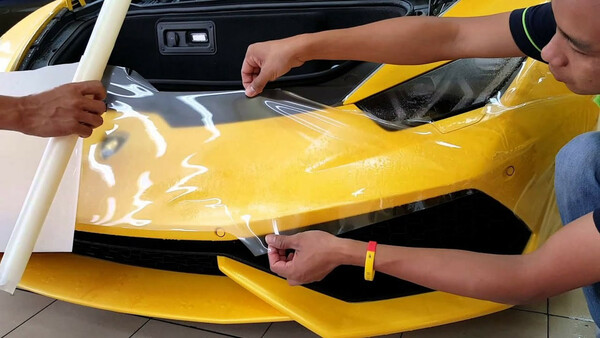Posted by - David Wilson \
September 5, 2024 \
Filed in - Other
\
calculate the amount of wrap
\
105 views \
0 comments \
0 likes \
0 reviews
Car wrapping has become an increasingly popular way to give your vehicle a fresh look, protect the original paint, or advertise a business. Whether you're opting for a full wrap or just a partial one, determining how much wrap you need is crucial to avoid running short or overspending. In this article, we’ll dive into the factors that influence how much car wrap you might need and how to make the right calculations.
Types of Car Wraps
Before estimating how much wrap you'll need, it’s essential to understand the different types of wraps available. Generally, wraps come in two forms:
- Full Wrap: Covers the entire exterior of the car, changing its color or adding designs across the whole surface.
- Partial Wrap: Applied to specific sections of the vehicle, such as the roof, hood, doors, or bumpers.
The choice between these two will significantly impact the amount of material you need.
Calculating How Much Wrap You Need
So, how much wrap do I need for my car? Here’s a simple method to estimate the amount:
- Measure the Surface Area: Start by measuring the length, width, and height of each section of your vehicle (e.g., hood, doors, roof, bumpers). Add all these measurements together to get the total surface area in square feet.
- Determine the Wrap Size: Wraps usually come in rolls of 60 inches wide (5 feet) and vary in length, from 25 to 100 feet. Multiply the length by the width of the wrap to calculate the total coverage area.
For example, if your car’s surface area is approximately 250 square feet, and your wrap comes in rolls of 60 inches wide by 25 feet long, you would get around 125 square feet of coverage per roll. So, you would need at least two rolls to wrap the entire car.
Key Factors to Consider
1. Size of the Vehicle
The size and type of your vehicle are the most critical factors when estimating how much car wrap you’ll require. A larger vehicle, such as an SUV, truck, or van, will naturally need more material than a smaller car like a coupe or sedan. Measuring the dimensions of your vehicle’s surfaces is the best way to get an accurate estimate.
2. Type of Wrap
Not all wraps are the same. Gloss, matte, metallic, and carbon fiber wraps can come in varying widths and lengths, depending on the manufacturer. You should always check the product specifications for the exact dimensions to calculate how much you’ll need.
3. Wrap Width
Wraps typically come in rolls that are 60 inches wide. This standard size allows most vehicles to be covered seamlessly with fewer joins, but for certain designs or larger vehicles, you may need to buy extra to account for any overlaps or alignment.
4. Complexity of the Design
If your vehicle has complex contours or intricate design features, you may need additional wrap to account for mistakes or adjustments. The more curves, sharp angles, and fine details your car has, the more wrap you'll require.
5. Extra Wrap for Mistakes
It’s wise to factor in extra material for errors. Whether you’re a professional installer or trying DIY for the first time, mistakes are inevitable. Having an extra 5-10% of material can save you from unexpected shortages during installation.
Common Car Types and Wrap Requirements
Here’s a rough guide to how much wrap is typically required for different vehicle types:
- Sedan: 250-300 square feet
- SUV: 300-400 square feet
- Pickup Truck: 350-450 square feet
- Van: 400-500 square feet
These estimates should give you a baseline, but remember to account for the specific factors related to your vehicle.
Final Thoughts
Estimating how much car wrap you need can feel like a daunting task, but with accurate measurements and a clear understanding of your vehicle, you can make a well-informed decision. Whether you're going for a full wrap or a partial one, taking the time to calculate the required amount will ensure a smooth and cost-effective installation.
By keeping these factors in mind, you’ll not only save money by avoiding unnecessary over-purchasing but also have enough material to complete the job with precision. Happy wrapping!




Comments